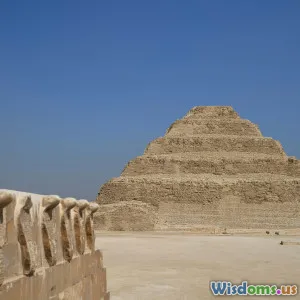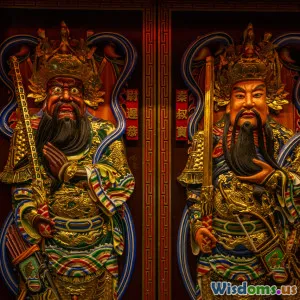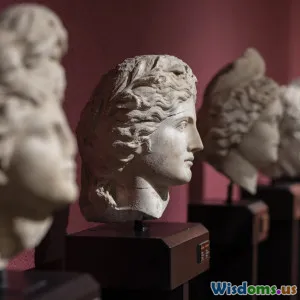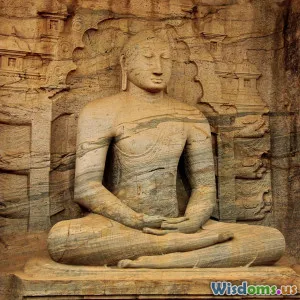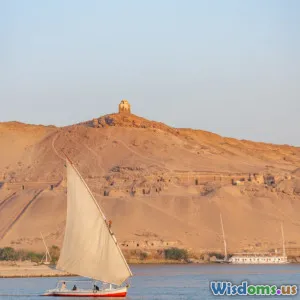
What Ancient Egyptian Mythology Can Teach Us About Climate Change
8 min read Explore how ancient Egyptian myths reveal timeless insights on humanity's relationship with climate and nature. (0 Reviews)
What Ancient Egyptian Mythology Can Teach Us About Climate Change
Ancient Egyptian mythology, with its rich pantheon of gods and symbolic stories, might seem worlds apart from modern concerns like climate change. However, these myths encapsulate profound understandings of natural cycles, humankind's delicate relationship with the environment, and the consequences of ecological imbalance. In this exploration, we delve into how the ancient narratives surrounding the Nile, the Creator gods, and the cycles of life and death offer valuable lessons for confronting today's global environmental crisis.
The Nile: Lifeblood and Climate Barometer
Central to ancient Egypt’s survival was the Nile River, whose annual flooding nourished the soil and supported agriculture. This cycle wasn’t just a physical phenomenon; it was deeply embedded in mythology. The inundation was seen as the resurrection of Osiris, the god of fertility and rebirth, whose death and revival symbolized life’s dependence on nature’s rhythm.
Mythological insights from the Nile’s flooding:
- The floods represented both destruction and renewal, emphasizing that humanity must respect nature's power while adapting to its rhythms.
- Pharaohs were considered mediators ensuring the Nile’s correct flooding, connoting humans’ responsibility to maintain environmental balance.
Modern parallels emerge in how climate change disrupts water cycles worldwide, causing floods, droughts, and food insecurity. The Egyptians’ veneration and attention to natural water cycles underscore the importance of monitoring and caring for these resources.
Gods Embodying Natural Forces and Climate
Ancient Egyptian deities personified various aspects of the environment.
Ra, the Sun God
Ra symbolized the life-giving sun, the primary driver of earthly climate. Stories depict Ra journeying through the underworld each night, fighting chaos (symbolized by serpent Apophis) before rising to bring light and warmth—a metaphor for the daily rebirth of natural order.
Hapi, the God of the Nile’s Floodwaters
Hapi governed the annual floods, emblematic of life’s bounty through water’s arrival. His duality, being both nurturing and potentially destructive, mirrors modern understandings of water's ecological role in sustaining or disrupting communities.
Geb and Nut
The earth god Geb and sky goddess Nut represent the natural environment itself, reminding us that the planet’s health depends on harmonious balance between the elements.
Through these deities, Egyptians projected a worldview deeply aware of nature’s volatility and humanity’s dependence on it.
The Concept of Maat: Balance and Harmony
Maat, the goddess and principle of truth, order, and cosmic balance, was foundational in Egyptian culture. She went beyond moral virtue to include ecological balance — the right measure for rivers, harvests, and seasons.
As the Egyptians believed that disorder (Isfet) invited chaos, mismanagement of nature could bring disaster. This concept informs us that modern disruption of ecosystems and climate patterns threatens societal stability, echoing ancient warnings about imbalance.
Mythical Floods and Climatic Catastrophes
Several Egyptian myths narrate floods and disasters as consequences of moral or cosmic imbalance. For example, the fury of Sekhmet, the lioness goddess of war and plague, inflicted drought and calamities. Though steeped in mythology, these allegories symbolize ancient recognition that environmental crises were often intertwined with human actions.
Such stories resonate today as climate change increasingly is driven by human activity, revealing a timeless link between ethical stewardship and environmental outcomes.
Archaeological and Historical Evidence: Climate Shifts in Ancient Egypt
Scientific studies corroborate that climate volatility affected ancient Egypt, shaping mythology and history:
- Around 2200 BCE, a severe drought and Nile failure coincided with political upheaval and social strife known as the First Intermediate Period.
- Pollen analysis and sediment data show fluctuations in Nile flows, suggesting Egyptians experienced environmental stresses that informed their religious narratives.
These correlations demonstrate how mythology and environmental realities influenced each other, offering a holistic understanding of human-climate interactions.
Lessons for Today: Integrating Ancient Wisdom
Ancient Egyptian mythology does not provide a scientific blueprint for solving climate change but offers valuable cultural and ethical insights:
- Respect for natural cycles: Just as Egyptians revered the Nile flood, modern societies must honor and protect natural water systems.
- Balance as a guiding principle: Embracing Maat today instructs us to seek ecological harmony, balancing development with sustainability.
- Human responsibility: Pharaohs were accountable for ensuring nature’s order; likewise, governments and individuals bear responsibility for climate stewardship.
- Recognition of nature’s duality: Water and sun can nurture or destroy, underlining the complex challenges climate change presents.
Furthermore, they remind us that climate change impacts not just nature but civilization’s stability and cultural continuity.
Conclusion: Bridging Mythology and Modern Environmentalism
Ancient Egyptian mythology richly encodes an environmental consciousness attuned to nature’s rhythms and humanity’s role within them. The reverence of the Nile’s inundation, the symbolic struggle between order and chaos, and the profound value placed on balance (Maat) resonate strongly with contemporary climate concerns.
By revisiting these myths, we gain more than historical curiosity—we reclaim perspectives that inspire ethical action and humility before nature’s power. Amid global calls for urgent climate solutions, ancient wisdom encourages harmony, respect, and shared responsibility, reminding us that we are part of a larger cosmic ecosystem where every action counts.
Understanding and embracing these lessons from the past might well enrich our path toward a more resilient and sustainable future.
References:
- Wilkinson, Richard H. The Complete Gods and Goddesses of Ancient Egypt. Thames & Hudson, 2003.
- Hassan, Fekri A. "The Dynamics of a Riverine Civilization: A Geoarchaeological Perspective on the Nile Valley, Egypt." World Archaeology, vol. 25, no. 1, 1993, pp. 22–35.
- Butzer, Karl W. Early Hydraulic Civilization in Egypt: A Study in Cultural Ecology. University of Chicago Press, 1976.
- Bell, Lachlan Donington. "Ancient Egyptian landscapes and memory." Journal of Archaeological Science, vol. 90, 2018, pp. 116-129.
Rate the Post
User Reviews
Popular Posts










